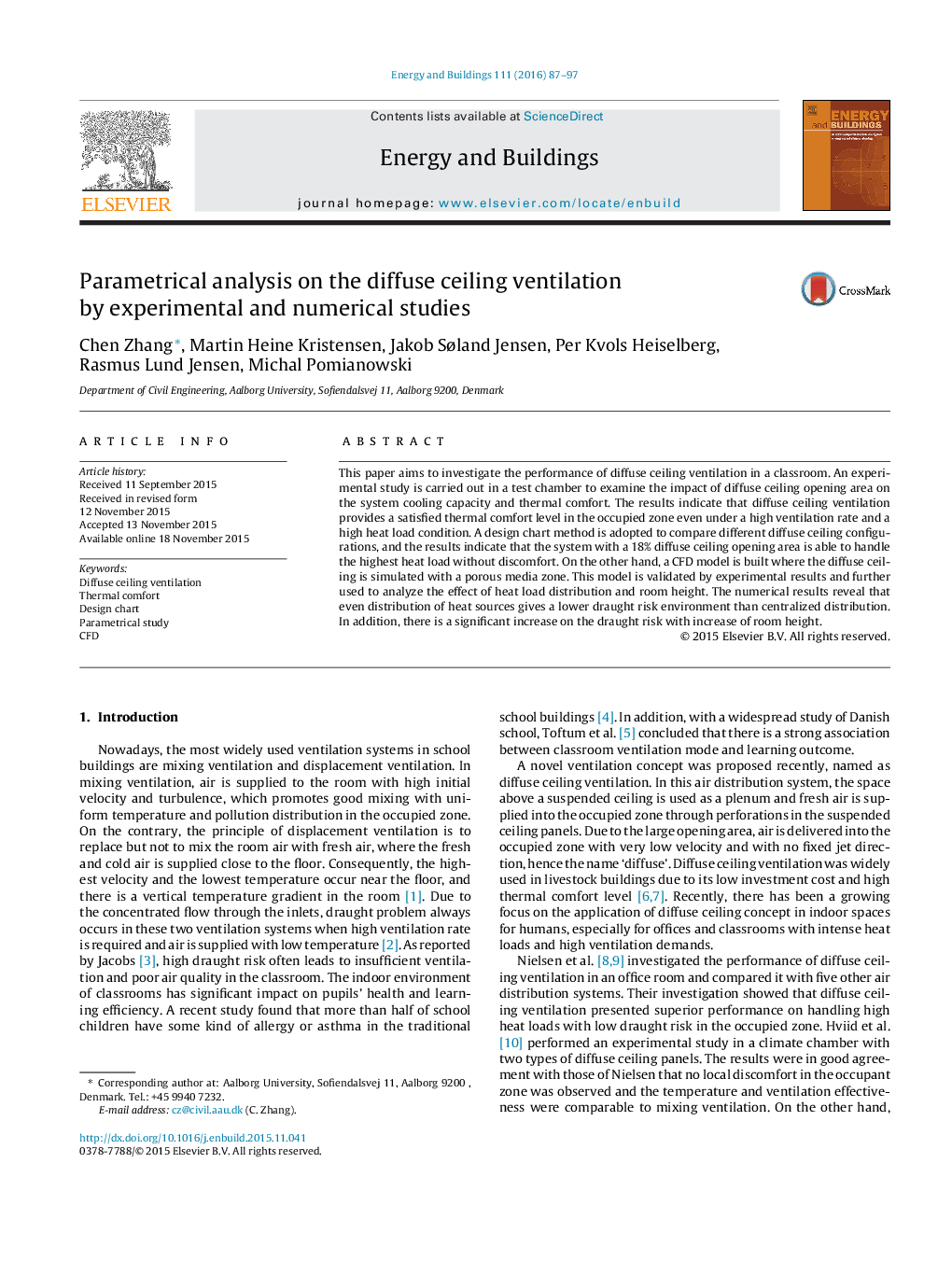| Article ID | Journal | Published Year | Pages | File Type |
|---|---|---|---|---|
| 6730780 | Energy and Buildings | 2016 | 11 Pages |
Abstract
This paper aims to investigate the performance of diffuse ceiling ventilation in a classroom. An experimental study is carried out in a test chamber to examine the impact of diffuse ceiling opening area on the system cooling capacity and thermal comfort. The results indicate that diffuse ceiling ventilation provides a satisfied thermal comfort level in the occupied zone even under a high ventilation rate and a high heat load condition. A design chart method is adopted to compare different diffuse ceiling configurations, and the results indicate that the system with a 18% diffuse ceiling opening area is able to handle the highest heat load without discomfort. On the other hand, a CFD model is built where the diffuse ceiling is simulated with a porous media zone. This model is validated by experimental results and further used to analyze the effect of heat load distribution and room height. The numerical results reveal that even distribution of heat sources gives a lower draught risk environment than centralized distribution. In addition, there is a significant increase on the draught risk with increase of room height.
Related Topics
Physical Sciences and Engineering
Energy
Renewable Energy, Sustainability and the Environment
Authors
Chen Zhang, Martin Heine Kristensen, Jakob Søland Jensen, Per Kvols Heiselberg, Rasmus Lund Jensen, Michal Pomianowski,
